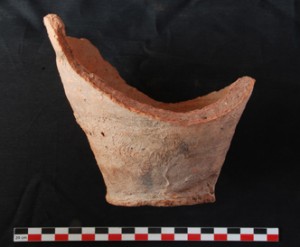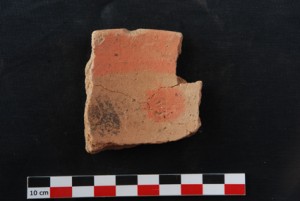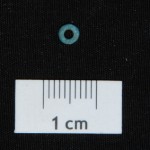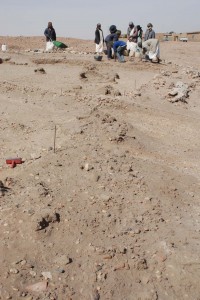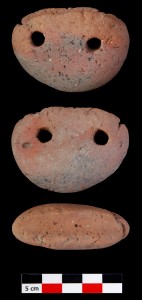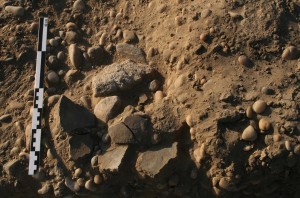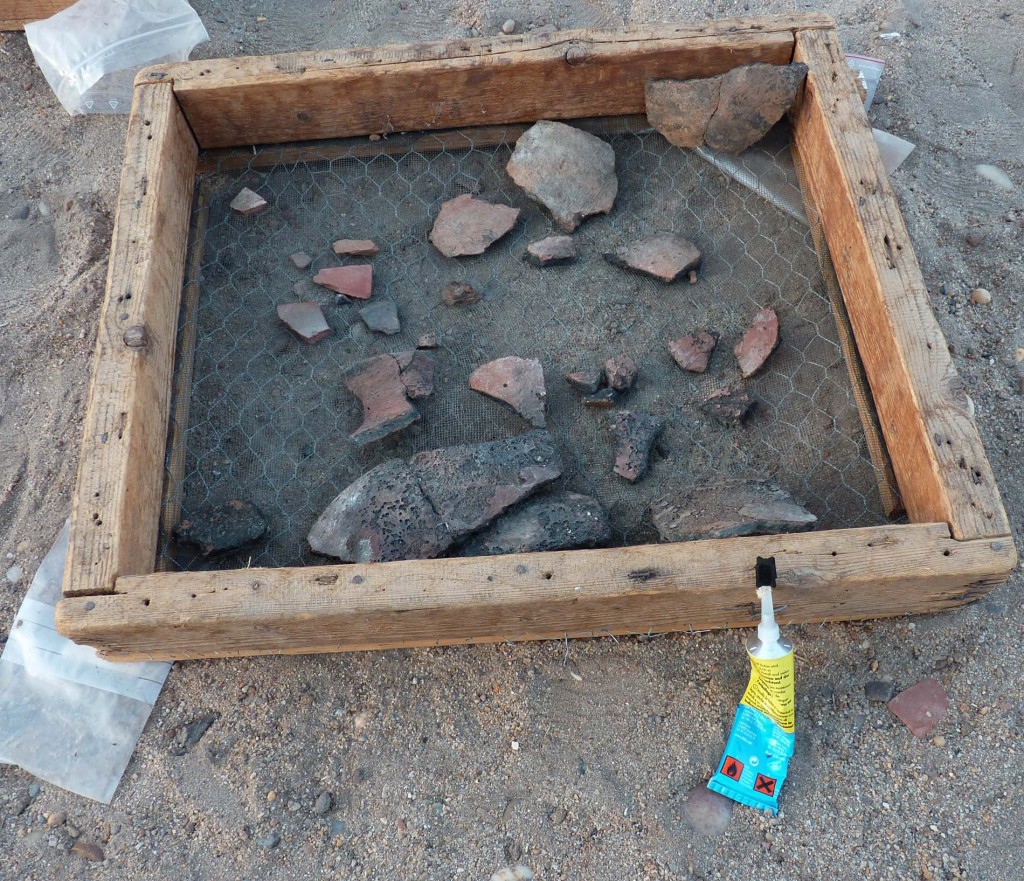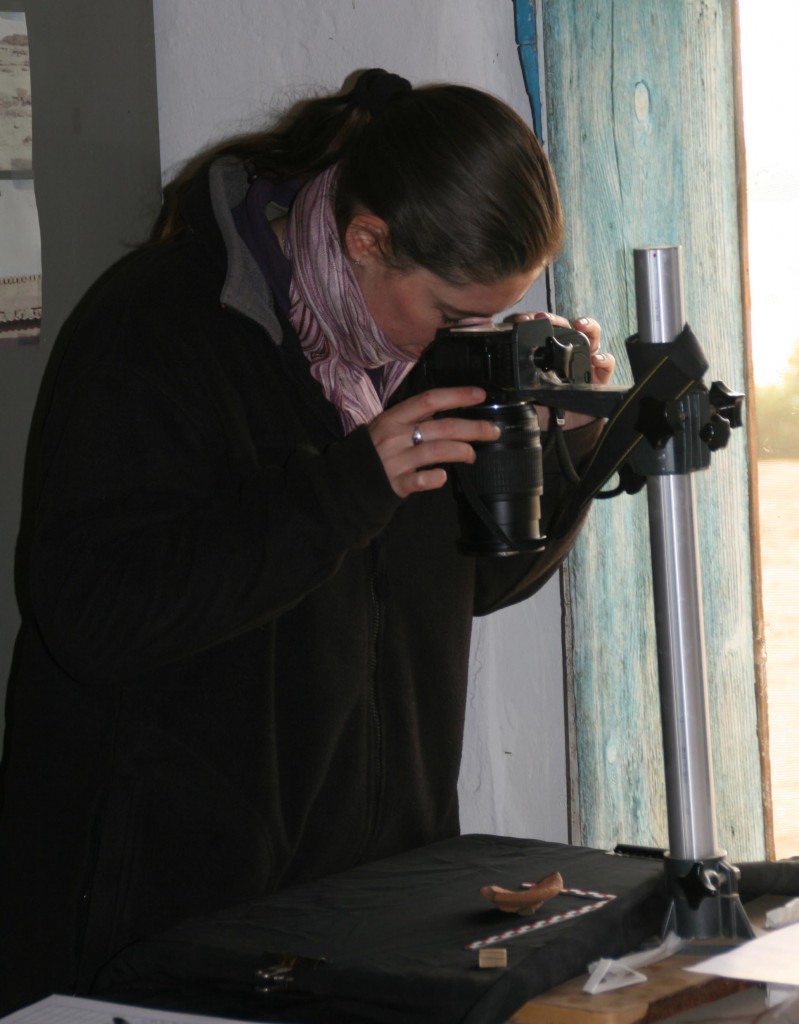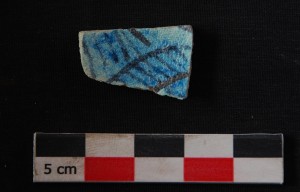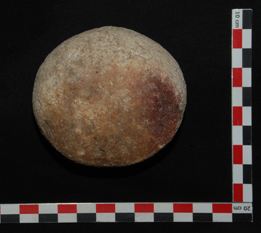Within the Southern baulk of Square 2 we discovered already 2 weeks ago organic remains below collapsed mud bricks, most likely some kind of mat or basketry. The extension towards the South allowed us now to check this interesting find of well-preserved organic material at SAV1E properly: we did not yet clean it completely as it was a very windy day today, but its outline and an oval shape is already visible, still partly covered by mud brick debris, pot sherds, sandy filling material comprising a stone and a bone fragment. We will make a detailed drawing and then uncover it completely.
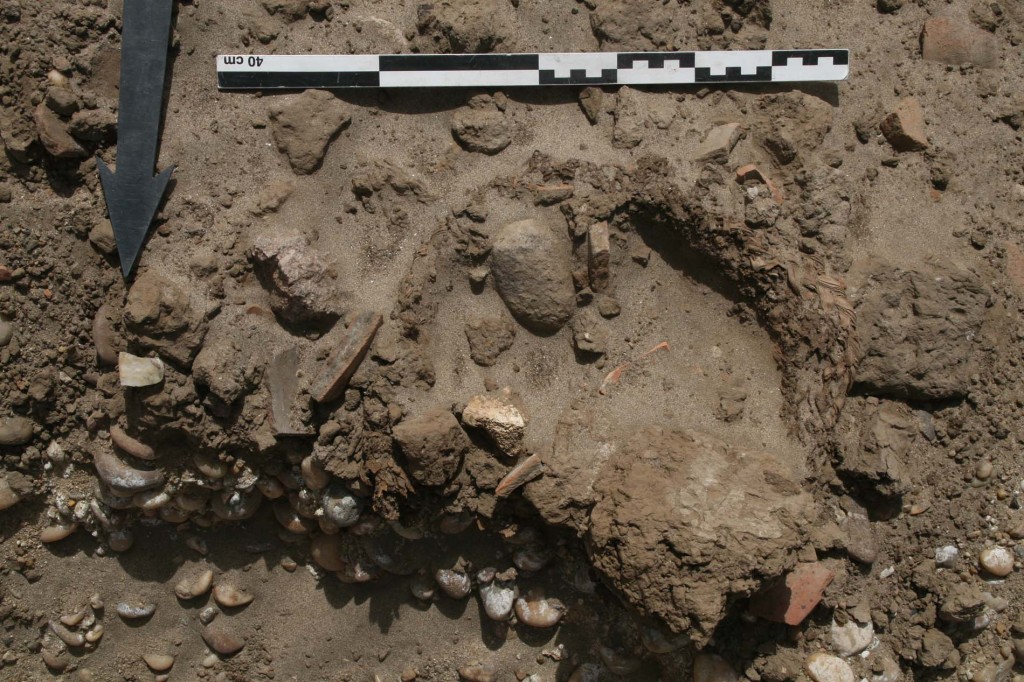 In Egyptian towns like Sai Island, one sometimes finds organic material in good state of preservation – especially due to the very arid climate in both Egypt and Sudan. Basketry is quite well known from Pharaonic settlement sites like Amarna. At the first glance, the basket at SAV1E seems to me rather late in date, especially since it was covered by a thick dump layer of mixed material, including in particular P
In Egyptian towns like Sai Island, one sometimes finds organic material in good state of preservation – especially due to the very arid climate in both Egypt and Sudan. Basketry is quite well known from Pharaonic settlement sites like Amarna. At the first glance, the basket at SAV1E seems to me rather late in date, especially since it was covered by a thick dump layer of mixed material, including in particular P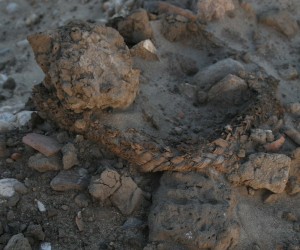 ost-New Kingdom pottery. However, its find spot is just to the south of the storage bin 14, safely dated to the early New Kingdom. It is also more or less on the same level – and one early 18th Dynasty dish sticks already out from below the basket (visible to the lower right corner on the first picture above). Further work will hopefully provide proper dating indications.
ost-New Kingdom pottery. However, its find spot is just to the south of the storage bin 14, safely dated to the early New Kingdom. It is also more or less on the same level – and one early 18th Dynasty dish sticks already out from below the basket (visible to the lower right corner on the first picture above). Further work will hopefully provide proper dating indications.

